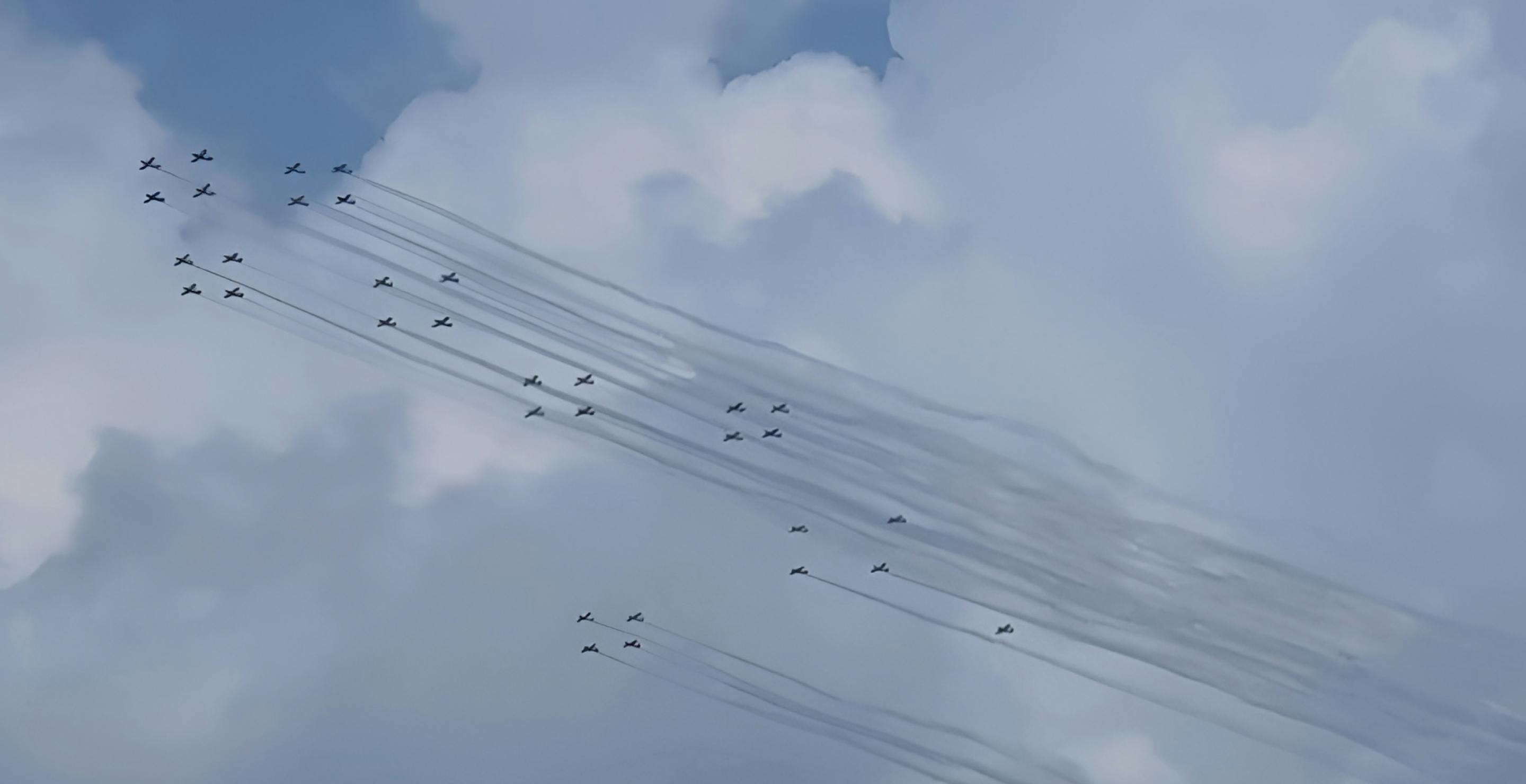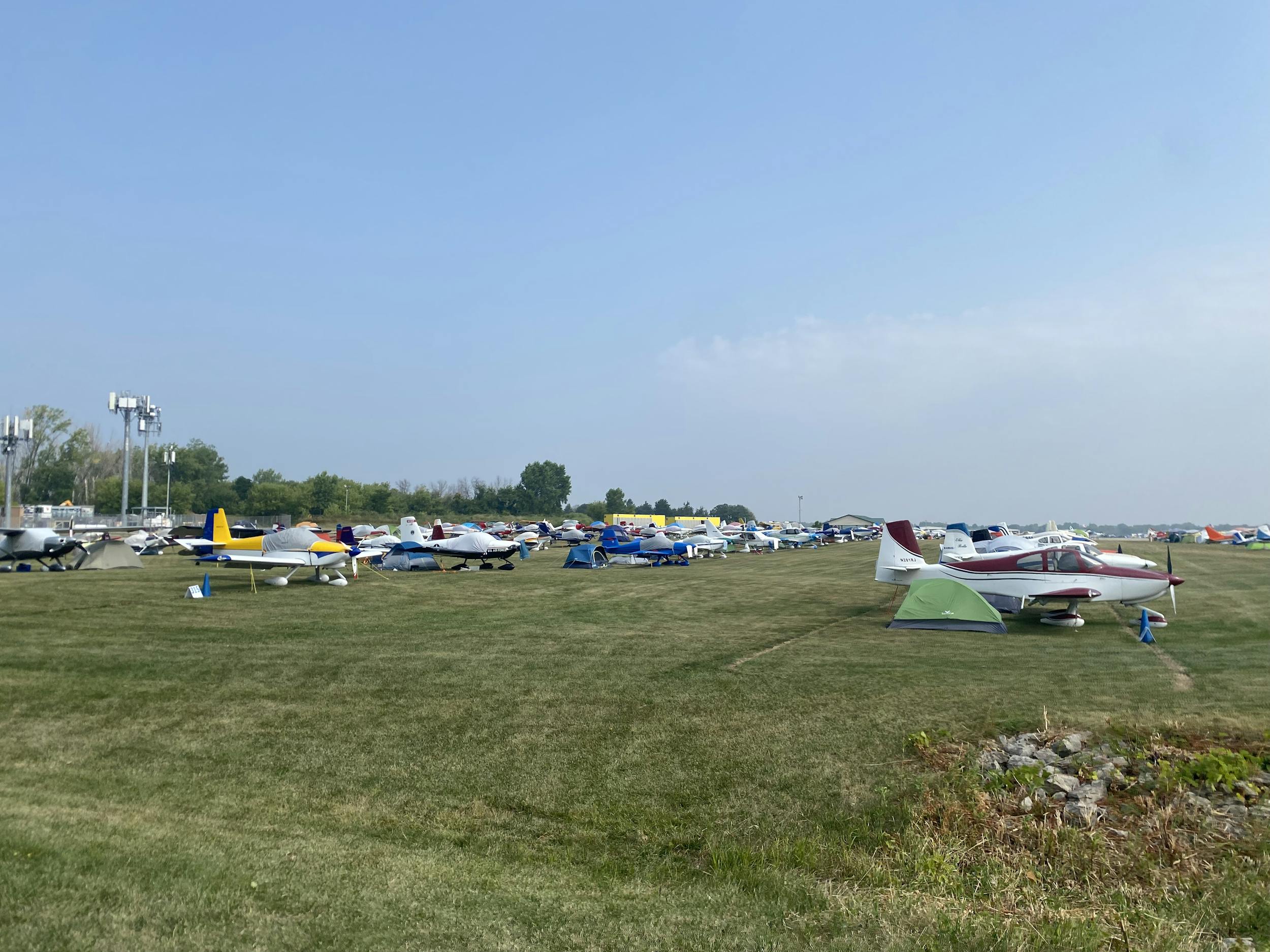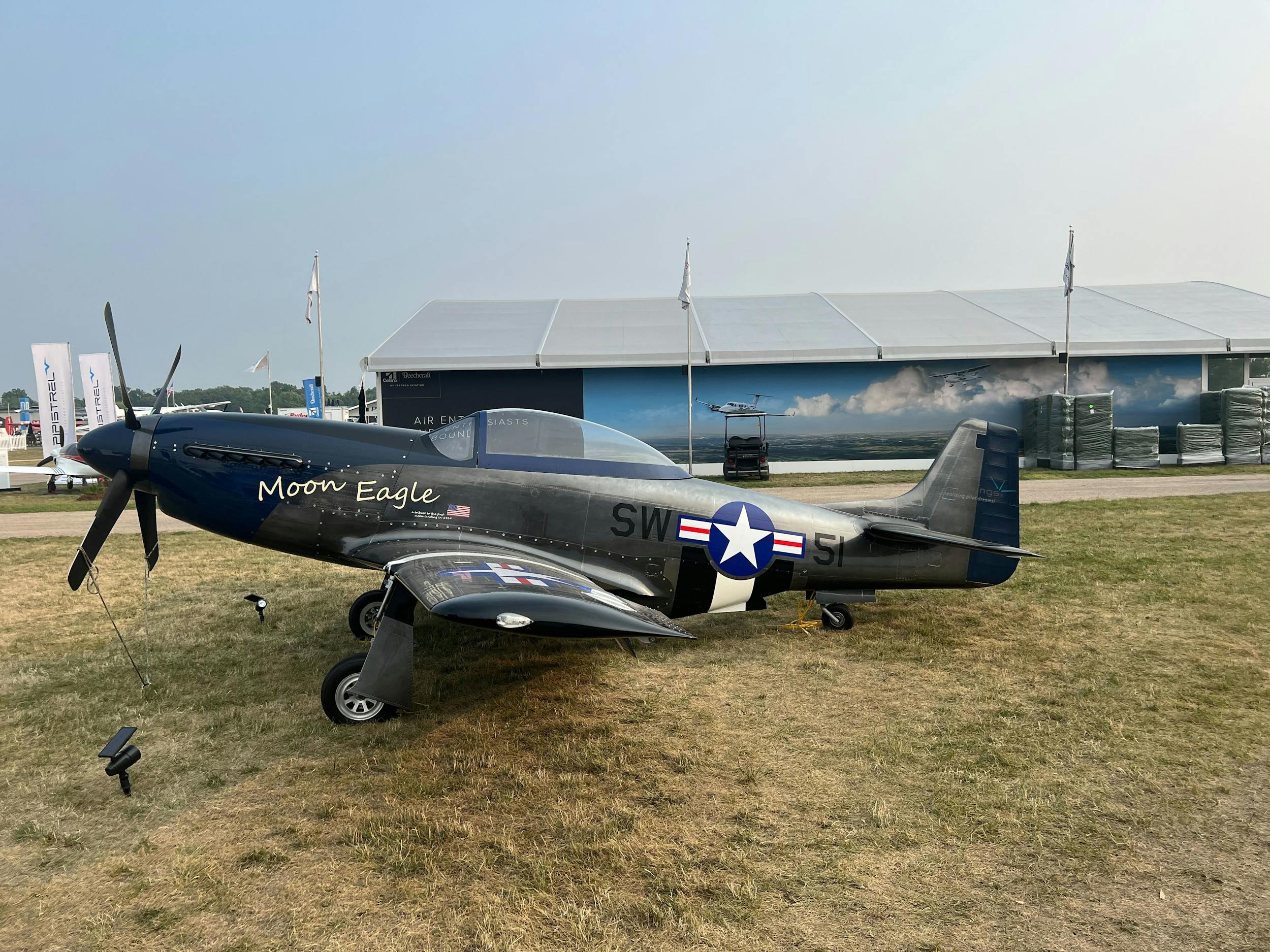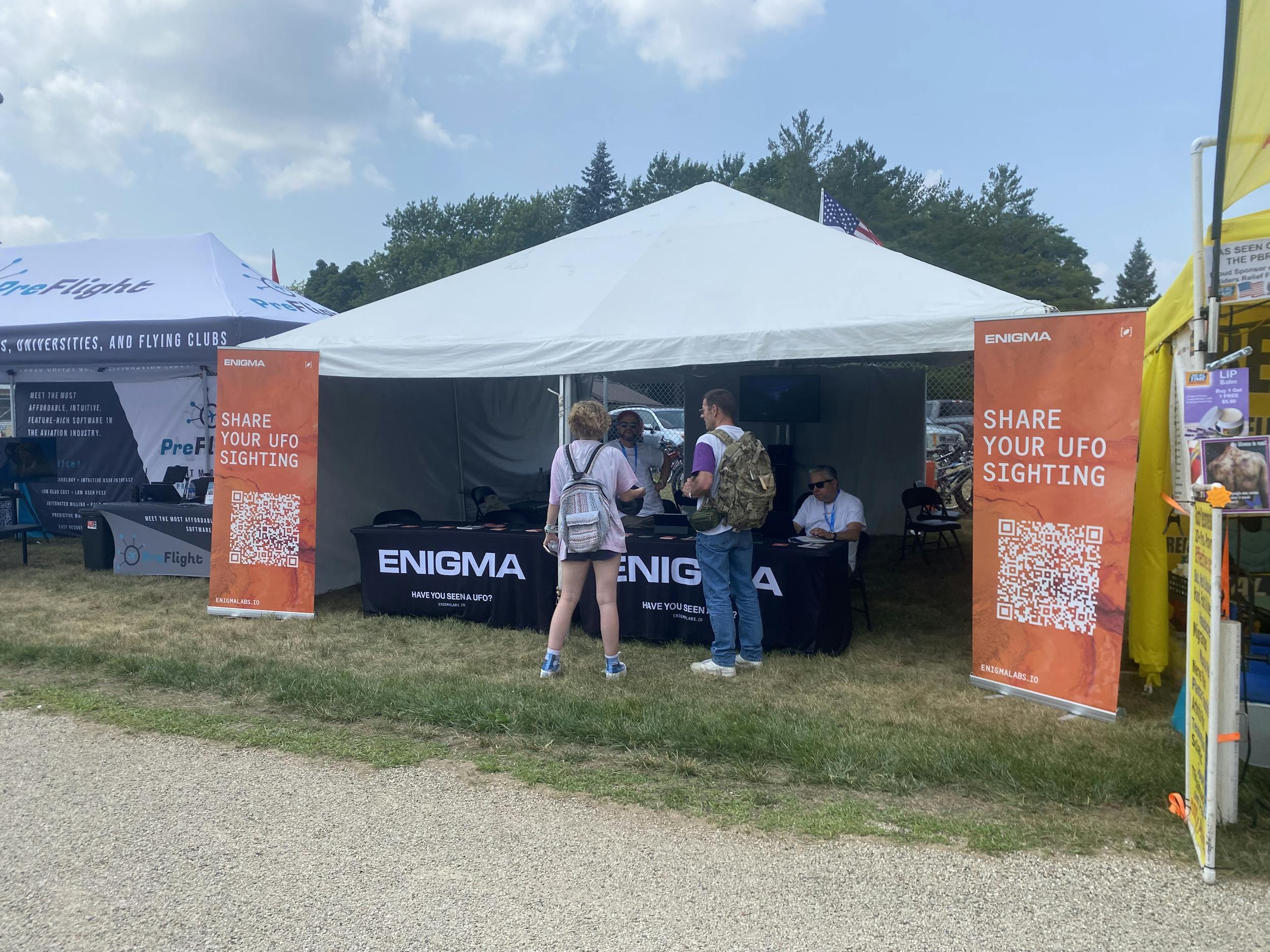

Learning From Pilots At the Oshkosh Air Show
At Enigma, our goal is to identify and disambiguate unidentified anomalous phenomena (UAP) sightings. As we continue to crowdsource sightings, it’s a priority for our team to be on the ground meeting with people who have seen something they can’t explain. We’ve spoken to fishers in upstate New York, hundreds of locals in San Diego and festivalgoers at Something in the Water.
In late July, we went to the annual Oshkosh Air Show to meet with military and commercial pilots, a highly credible group when it comes to UAP sightings. This year 677,000 pilots and air traffic controllers attended the airshow in Wisconsin. Speaking with those folks in a relaxed, informal setting was a tremendous opportunity for our team to learn from a large community of aviation professionals in one place.

Rows of aircraft at Oshkosh
Pilots — a credible source for UAP sightings
Pilots are skilled observers. They spend tens of thousands of hours in the sky and have considerable experience identifying phenomena in their airspace. They’re trained to recognize the direction, speed, and size of aircraft, and many of the pilots we work with are able to recall their experiences with incredible detail.
Pilots also have orders of magnitude more experience than civilians do when it comes to looking at things in the sky. One pilot we interviewed has over 9,500 hours of airborne time over two decades. In his twenty years of flying, he told us that roughly 30 - 50% of his colleagues have “seen an unusual object or strange-moving light during flight that they couldn’t explain.”
Eliminating UAP sighting stigma
Fears of scrutiny from fellow aviators or the government often prevent pilots from reporting what they see. In recent years, the stigma around sharing UAP sightings has dropped dramatically among civilians, but unfortunately it still lingers among pilots.
During the first half of the week we spent at the Air Show, pilots were shyer in approaching us. Then, halfway through the event, the Congressional hearings on UAP took place. We witnessed a dramatic change in sentiment. After the hearings and all the news headlines that followed it, pilots more willingly approached us and were forthcoming in sharing their stories.
We also found that our approach and philosophy around UAPs resonated. Our approach is straightforward. We’re agnostic as to what UAP are. We will go where the data leads us. We know that most “UAP” sightings have rational explanations, even if they are unidentified when they are initially spotted. Most pilots we spoke with have a similar perspective on the issue.
We also fundamentally believe in sighting transparency as a means of destigmatization, which is why we have pledged to keep all sightings data, historical and recent submissions, free and available to the public to query.

Surprising conversations
In order to methodically research pilot experiences and perspectives, we ran a survey. Some takeaways:
- Of all the pilots we surveyed, 45% told us they’d seen UAP. But only 10% of those who’d seen UAP reported it.
- 81% of pilots said they would be open to reporting UAP if they saw one — a remarkably high number. They explained why they felt it was important to report, including “it is the right thing to do”, that this was “a chance to help us explain what's going on”, that “it's important given the implications” and that “as pilots we need to know what’s going on for aviation safety.”
- That said, a few respondents expressed reluctance to report sightings to regulatory bodies for fear of backlash, stating “I wouldn’t want the FAA to get my name” or “I don’t want to face scrutiny from the government.” One respondent said they saw UAP but didn’t report it because, “I didn’t want to come off as a quack.” Others who served in the military commented that they didn’t report because they didn’t know what the rules were, “I was in the RAF [when I saw one] and I assumed they had some sort of protocol.”

- Despite the stigma and fears mentioned, when asked, “Do you know anyone in commercial or military aviation who has regretted reporting UAP due to actions that followed?”, every single respondent said “no.”
- When asked their thoughts on whether the FAA takes UAP seriously, only 21% of surveyed pilots said they felt the FAA does take UAP seriously. One respondent commented, “they seem to maintain that [UAP] are a hallucination or made up entirely.” Another shared their view that, “…they want to downplay everything…maybe because they think the public will panic.” A third said that the fact that the FAA doesn’t have a professional solution reflects they don’t take it seriously. A fourth respondent said that although the FAA itself might not take it seriously, "the [air traffic] controllers seem curious like we do.”
- Although 81% of pilots said they were willing to report UAP, only 14% of survey respondents said they knew how to report UAP. Clearly awareness is an obstacle.

This survey and our time at the Oshkosh Air Show taught us a lot about pilot perspectives. Pilots are interested in the UAP question and a large majority are willing to share their sighting story. Much of the challenge today remains education and awareness. Pilots need to know where to report a sighting and feel comfortable doing so.
Enter Enigma Labs. We are here to make it easy to report what you see. You can easily do so on our web submission page or on our iOS app. Of the thousands of people have already submitted sightings to us, many are pilots. You can choose to submit anonymously, and we are committed to user privacy.
The dramatic shift in attitude from pilots before and after the congressional hearings was a powerful reminder — public dialogue drives progress. And sharing begets sharing.
So spread the word about Enigma, and let's keep the conversation going together.